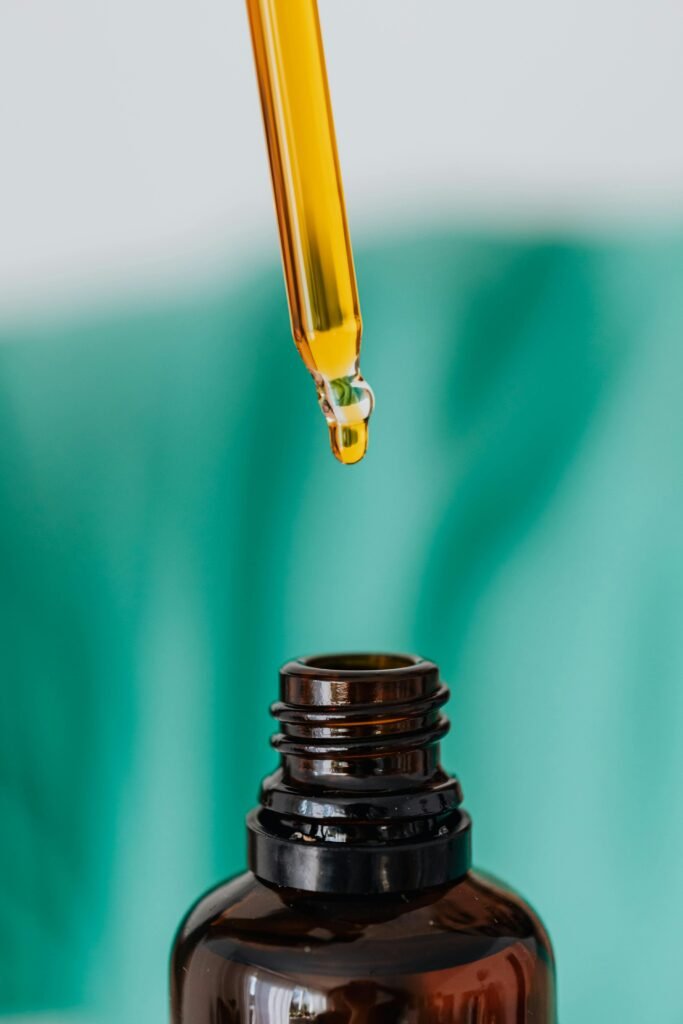If you find yourself wondering how to determine if your medications qualify for manufacturer-sponsored patient assistance programs, you’re not alone. It’s a common concern for those seeking help with affordability and access to their prescribed medications. In this article, we will explore some easy and practical steps that you can take to find out if the medications you are taking are eligible for these valuable programs. With a little guidance, you can navigate this process with confidence and potentially receive the financial support you need for your prescription needs.
Understanding Manufacturer-Sponsored Patient Assistance Programs
What are patient assistance programs?
Patient assistance programs are initiatives established by pharmaceutical manufacturers to provide financial assistance and support to patients who are unable to afford their medications. These programs are designed to bridge the gap between patients’ medication costs and their ability to pay for them.
Why would a manufacturer offer a patient assistance program?
Manufacturers offer patient assistance programs as part of their commitment to ensuring that patients have access to the medications they need. These programs also help manufacturers meet their social responsibility goals and may create goodwill among patients and healthcare providers. By providing financial support, manufacturers can make their medications more affordable and increase patient adherence to treatment plans.
Benefits of patient assistance programs
Patient assistance programs offer numerous benefits to eligible individuals. Firstly, they provide financial relief by reducing or eliminating the out-of-pocket costs associated with medications. This not only improves access to necessary treatments but also helps alleviate the financial burden on patients and their families. Additionally, patient assistance programs often simplify the process of obtaining medications, providing convenience and peace of mind to patients. These programs may also offer supportive services such as educational resources, counseling, and access to additional healthcare resources.
Eligibility criteria for patient assistance programs
Eligibility criteria for patient assistance programs vary among manufacturers but commonly include factors such as income level, insurance coverage, and medical necessity. Some programs may specifically target individuals without insurance or those facing financial hardship. It is important to carefully review the eligibility requirements of each program to determine if you qualify. Manufacturers typically provide detailed information on their websites or through dedicated resources to help individuals determine their eligibility.
Researching Your Medications’ Manufacturer
Identifying the manufacturer
To research patient assistance programs, you need to identify the manufacturer of your medications. The manufacturer’s information can usually be found on your prescription label or packaging. If you are unsure about the manufacturer, your pharmacist or healthcare provider can assist you in determining the relevant details.
Visiting the manufacturer’s website
Once you have identified the manufacturer, visit their official website. Many manufacturers dedicate sections of their website to provide information on patient assistance programs. Navigating to the patient assistance or patient support section can give you valuable insights into the specific programs they offer, their eligibility criteria, and how to apply.
Searching for patient assistance programs on the website
Within the manufacturer’s website, use the search function or navigation menu to find information related to patient assistance programs. Look specifically for pages or sections dedicated to patient assistance, financial support, or medication affordability. Manufacturers often provide comprehensive resources, including downloadable application forms, contact information, and frequently asked questions (FAQs) to help patients understand and access their assistance programs.
Contacting the manufacturer directly
If you cannot find the necessary information on the manufacturer’s website, contacting them directly can be a helpful option. Manufacturers usually have dedicated support lines or contact forms to address patient inquiries. Utilize these channels to ask about specific patient assistance programs, eligibility requirements, and application processes. Remember to provide them with accurate information about the medications you are taking, including dosage and frequency, to ensure accurate guidance.

This image is property of images.pexels.com.
Consulting Healthcare Professionals
Discussing patient assistance programs with your doctor
Your doctor plays a crucial role in helping you navigate patient assistance programs. Schedule an appointment or bring up the topic during your next visit. Discuss your financial concerns and inquire about any knowledge or experience they may have with patient assistance programs. Your doctor may have access to additional resources or insights about specific programs that could benefit you. They can also provide documentation supporting your need for medications if required during the application process.
Seeking guidance from pharmacists
Pharmacists are highly knowledgeable about medications and often have access to information about patient assistance programs. When picking up your prescriptions, take a few moments to speak with the pharmacist. Ask if they are aware of any manufacturer-sponsored patient assistance programs for the specific medications you are taking. They can provide valuable guidance on how to apply, what documentation may be needed, and any potential restrictions or limitations associated with the programs.
Contacting patient advocacy organizations
Patient advocacy organizations are dedicated to supporting individuals with specific medical conditions and can provide guidance on accessing patient assistance programs. They have expertise in navigating the healthcare system and can offer valuable resources and information. Reach out to relevant patient advocacy organizations that specialize in your condition or therapeutic area. They may have comprehensive databases, publications, or helplines that can assist you in finding manufacturer-sponsored patient assistance programs.
Using Online Resources
Exploring online databases
There are several online databases that aggregate information about patient assistance programs offered by various manufacturers. These databases allow you to search for programs based on medication names, manufacturers, or medical conditions. Websites such as NeedyMeds, RxAssist, and Partnership for Prescription Assistance are examples of resources that provide comprehensive and up-to-date information. Utilize these databases to identify relevant patient assistance programs and access the necessary details for application.
Utilizing medication assistance websites
In addition to databases, some websites focus specifically on providing information and resources related to medication assistance. These platforms often provide a wealth of information, including manufacturer-sponsored patient assistance programs. Websites such as Patient Access Network Foundation, RxHope, and Healthwell Foundation are examples of online resources that list medication assistance programs and provide step-by-step guidance on accessing them. These websites typically outline the eligibility criteria, application processes, and contact details for each program.
Searching for drug-specific assistance programs
In some cases, manufacturers offer assistance specifically for certain medications. To determine if there are drug-specific assistance programs available, search the medication name along with keywords such as “patient assistance program” or “financial support” in search engines. This can lead you to specific manufacturer websites or resources that provide details on assistance programs relevant to your medication. Be sure to review the eligibility criteria and application requirements carefully to determine if you qualify for these programs.

This image is property of images.pexels.com.
Contacting Pharmaceutical Assistance Helplines
Finding contact information for helplines
Pharmaceutical assistance helplines offer direct access to professionals who can assist you in navigating patient assistance programs. The contact information for these helplines is often available on medication packaging, prescription information leaflets, or manufacturer websites. Alternatively, you can contact your healthcare provider or pharmacist and inquire about the availability of pharmaceutical assistance helplines. They can provide you with the necessary contact details to speak with a representative.
Calling helplines for assistance
Once you have the contact information for pharmaceutical assistance helplines, call the designated phone numbers. Explain your situation and inquire about patient assistance programs that may be available for your medications. The helpline representatives are trained to answer questions, guide you through the application process, and provide the necessary information to apply for assistance. Be prepared to provide details about your medications, dosage, frequency, and any insurance coverage you may have.
Providing necessary details about your medications
When speaking with pharmaceutical assistance helpline representatives, it is important to provide accurate and complete information about your medications. Be prepared to share details such as the medication name, dosage, frequency, and any other relevant information. This will help the representatives assess your eligibility and provide you with accurate guidance on accessing patient assistance programs. Additionally, provide any information related to insurance coverage or financial need to ensure the most appropriate assistance options are explored.
Checking with Healthcare Insurance Providers
Contacting your insurance provider
While patient assistance programs are often designed for individuals without insurance or those facing financial challenges, it is still important to check with your insurance provider. Contact your insurance company directly to inquire if they cover any patient assistance programs offered by manufacturers. Some insurance plans may have partnerships or agreements with specific manufacturers to provide discounted or subsidized medications to their members. By exploring these options, you can potentially access additional financial support for your medications.
Inquiring about patient assistance programs covered by your insurance
During your conversation with the insurance provider, specifically ask if they cover any patient assistance programs for your medications. Inquire about the eligibility criteria, application process, and any necessary documentation that may be required. By understanding the coverage provided by your insurance plan, you can explore all available avenues for financial assistance. It is important to keep in mind that not all insurance plans offer coverage for patient assistance programs, so be prepared for different potential outcomes.
Verifying the eligibility of your medications
Even if your insurance provider confirms coverage of patient assistance programs, it is essential to verify the eligibility of your specific medications. Certain medications may not be covered or may have specific criteria to meet. Request a detailed list or confirmation of the medications covered under patient assistance programs. Cross-reference this list with your prescribed medications to ensure your treatments are eligible. If any of your medications are not covered, explore alternative options mentioned in this article, such as contacting manufacturers directly or seeking assistance from medication assistance websites.

This image is property of images.pexels.com.
Reviewing Prescription Drug Labels and Inserts
Examining the package inserts
Prescription drug labels and inserts often contain valuable information about patient assistance programs. Take a moment to thoroughly review these materials. Look for any details related to manufacturer-sponsored patient assistance programs, financial support, or resources for medication affordability. Manufacturers may include contact information, website addresses, or instructions on how to access their assistance programs within these inserts.
Looking for information about patient assistance programs
Within the prescription drug labels and inserts, focus specifically on sections related to patient support or financial assistance. Manufacturers often include relevant information in these sections to ensure patients are aware of the resources available to them. Pay attention to any instructions regarding application processes, eligibility criteria, or program-specific details. This information will be crucial when considering and applying for patient assistance programs.
Contacting listed phone numbers or websites
If the prescription drug labels or inserts mention specific phone numbers or websites related to patient assistance programs, consider contacting or visiting these resources. The provided contact details may lead you directly to the manufacturer’s patient assistance program information, allowing you to gather more details and explore your eligibility. Make note of any relevant information provided during these contacts to streamline the application process when you are ready to apply for assistance.
Joining Support Groups and Communities
Connecting with patient support groups
Support groups are a valuable resource for individuals facing similar health challenges and can provide insights into accessing patient assistance programs. Look for support groups specific to your condition or therapeutic area. These groups may have members who have already navigated patient assistance programs and can share their experiences and advice. Engage with the support group participants, ask questions, and learn from their experiences. Sharing your own concerns and challenges can also lead to helpful recommendations tailored to your situation.
Engaging in online communities
Online communities, such as forums, social media groups, or blogs, provide platforms for individuals to connect and share information. Join relevant online communities focused on healthcare, patient support, or medication affordability. Participate in discussions, ask questions, and seek guidance from community members. These communities often have members who have firsthand experience with patient assistance programs and can offer valuable tips, suggestions, and resources. However, be cautious when sharing personal information online and ensure you are engaging with reputable and trustworthy platforms.
Sharing experiences and seeking guidance
Utilize support groups and online communities not only to seek assistance but also to share your own experiences. Share any insights or lessons you have learned while navigating patient assistance programs. By contributing your own knowledge, you can help others who may be facing similar challenges. Actively participate in discussions, offer support to fellow members, and provide recommendations based on your experiences. Remember that the information shared should be accurate and based on your personal experiences or reputable sources.
Attending Assistance Program Workshops or Events
Checking for workshops or events related to patient assistance programs
Patient assistance program workshops or events are often organized by patient advocacy organizations, healthcare institutions, or manufacturers themselves. Check the websites of these organizations or search for local events related to patient assistance programs. These workshops or events provide an opportunity to learn directly from experts in the field, interact with representatives from patient assistance programs, and gain a comprehensive understanding of the application process and eligibility criteria. Participation in these workshops can equip you with valuable knowledge and insights.
Participating in seminars or presentations
Seminars and presentations focused on patient assistance programs offer a platform to gain in-depth knowledge about specific assistance programs. Look for seminars or presentations organized by healthcare institutions, patient advocacy organizations, or manufacturers. These events often feature speakers who are well-versed in the intricacies of patient assistance programs and can provide detailed information and guidance. Taking part in these seminars allows you to ask questions, network with professionals, and uncover additional resources that may assist you in accessing the necessary support.
Understanding the application process
One of the key advantages of attending assistance program workshops or events is gaining a thorough understanding of the application process. Workshops and presentations provide step-by-step guidance on how to apply for patient assistance programs, including documentation requirements, timeframes, and submission processes. By understanding the application process in detail, you can ensure that your application is complete, accurate, and stands the best chance of success. Take notes during the workshops or events to refer to when preparing to submit your application.
Applying for Patient Assistance Programs
Gathering necessary documentation
Before applying for patient assistance programs, gather all the necessary documentation. Typical documentation requirements may include proof of income, tax returns, identification documents, healthcare provider prescriptions, and any other supporting materials outlined by the manufacturer. Review the eligibility criteria carefully and ensure you have all the required documentation before proceeding. Missing or incomplete documentation may delay the application process or result in denial of assistance.
Submitting applications
Once you have compiled the necessary documentation, complete the application forms provided by the manufacturer. Follow the instructions meticulously and ensure all required fields are completed accurately. Attach any relevant supporting documents and double-check your application for any errors or omissions. Submit the application by the specified method, whether online, through mail, or via email, ensuring it reaches the manufacturer within the stated timeframe. Keeping a record of your application, such as copies of completed forms and delivery confirmations, is recommended for your own reference.
Following up on the application status
After submitting your application, it is essential to follow up on its status. Patient assistance programs typically require some time to review and process applications. Contact the manufacturer through the designated communication channels to inquire about the status of your application. Be prepared to provide them with your application reference number or any other details they may require to locate your application. Following up ensures that your application is progressing and enables you to address any issues or provide additional information if necessary.


